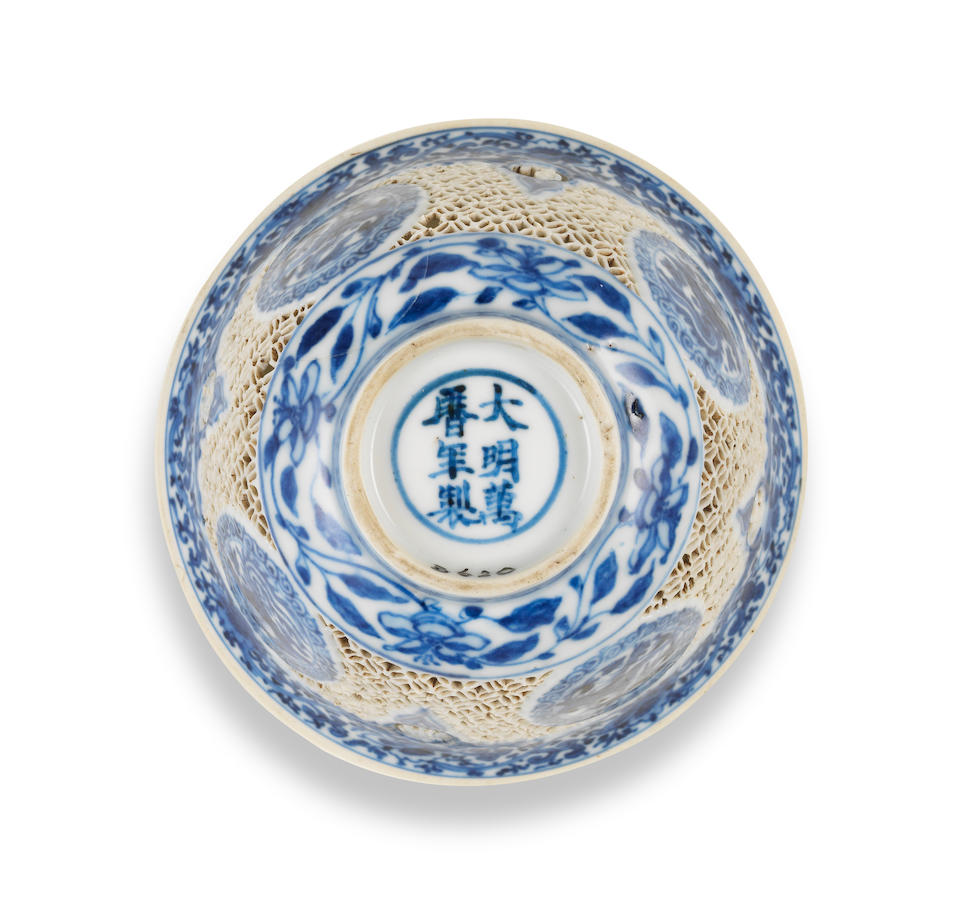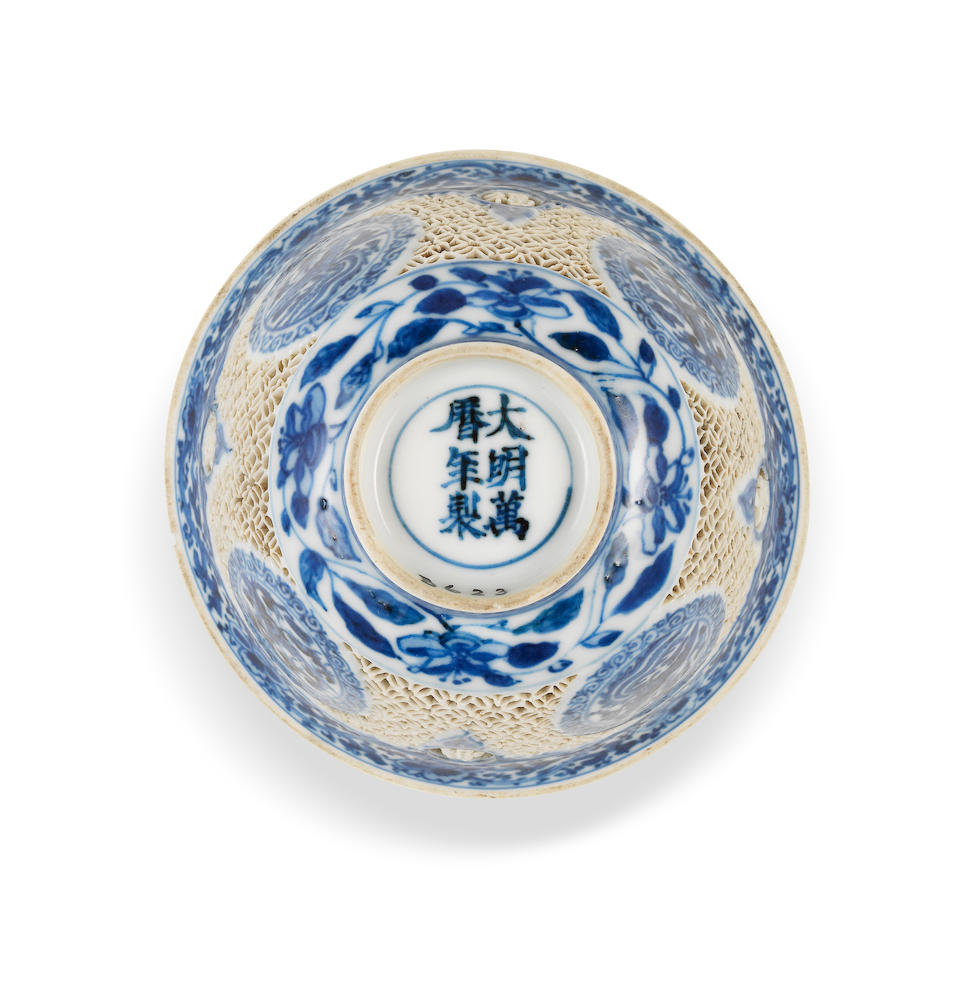A rare pair of blue and white reticulated cups, Wanli six-character marks and of the period (1573-1619)


Lot 2. A rare pair of blue and white reticulated cups, Wanli six-character marks and of the period (1573-1619). Each 9cm (3 1/2in) diam. Estimate HK$ 120,000 - 180,000 (€14,000 - 21,000). Sold for HK$ 1,360,000 (€ 161,481). Photo: Bonhams.
Each cup decorated with four phoenix roundels surrounded by an openwork ground of pierced lattice patterns, interspersed with four small circular roundels reading fu shou kang ning, all between floral bands by the mouth and foot rim, the base with a six-character kaishu mark (2).
Provenance: Alfred E. Hippisley Collection (1848-1939)
Sir Percival David (1892-1964), nos.B.620 and B.623
Sotheby's London, 15 October 1968, lot 98
Hans Goldstein collection and thence by descent.
Note: The present lot belongs to a group of wares with delicate openwork designs which would have been cut by hand when the clay was leather hard before firing. This required great skill and precision. The pierced characters reading fu shou kang ning, meaning good fortune, long life, health and peace on the present pair of bowls, would have been extremely difficult to execute successfully and are a testament to the skill of the master potter, and also explains the scarcity of such bowls.
An identical pair of teacups, Wanli marks and of the period, in the Sir Percival David Collection, nos.B.621 and B.622 is illustrated by S.Pierson, Blue and White for China, Porcelain Treasures in the Percival David Collection, London, 2004, pp.106-107, no.45. Compare also with a related blue and white cup, Wanli mark and period, but without characters and with the interior encased in a silver lining, in the National Palace Museum, Taipei, illustrated in Empty Vessels, Replenished Minds: The Culture, Practice, and Art of Tea, Taiwan, 2000, p.100, no.79; this cup also has an imperial palace label indicating it was used as a teacup during the Qing dynasty.
BONHAMS. FINE CHINESE CERAMICS AND WORKS OF ART, 4 Jun 2015 10:30 HKT - HONG KONG, ADMIRALTY

/https%3A%2F%2Fprofilepics.canalblog.com%2Fprofilepics%2F1%2F0%2F100183.jpg)
/https%3A%2F%2Fstorage.canalblog.com%2F03%2F02%2F119589%2F96711876_o.jpg)
/https%3A%2F%2Fstorage.canalblog.com%2F11%2F31%2F119589%2F94773502_o.jpg)
/https%3A%2F%2Fstorage.canalblog.com%2F20%2F83%2F119589%2F94772815_o.jpg)
/https%3A%2F%2Fstorage.canalblog.com%2F26%2F72%2F119589%2F75604929_o.jpg)
/https%3A%2F%2Fstorage.canalblog.com%2F59%2F60%2F119589%2F26458628_o.jpg)



/image%2F1371349%2F20240416%2Fob_2a8420_437713933-1652609748842371-16764302136.jpg)
/image%2F1371349%2F20240414%2Fob_83ee65_2024-nyr-22642-0954-000-a-blue-and-whi.jpg)
/image%2F1371349%2F20240414%2Fob_15808c_2024-nyr-22642-0953-000-a-blue-and-whi.jpg)
/image%2F1371349%2F20240414%2Fob_e54295_2024-nyr-22642-0952-000-a-rare-blue-an.jpg)